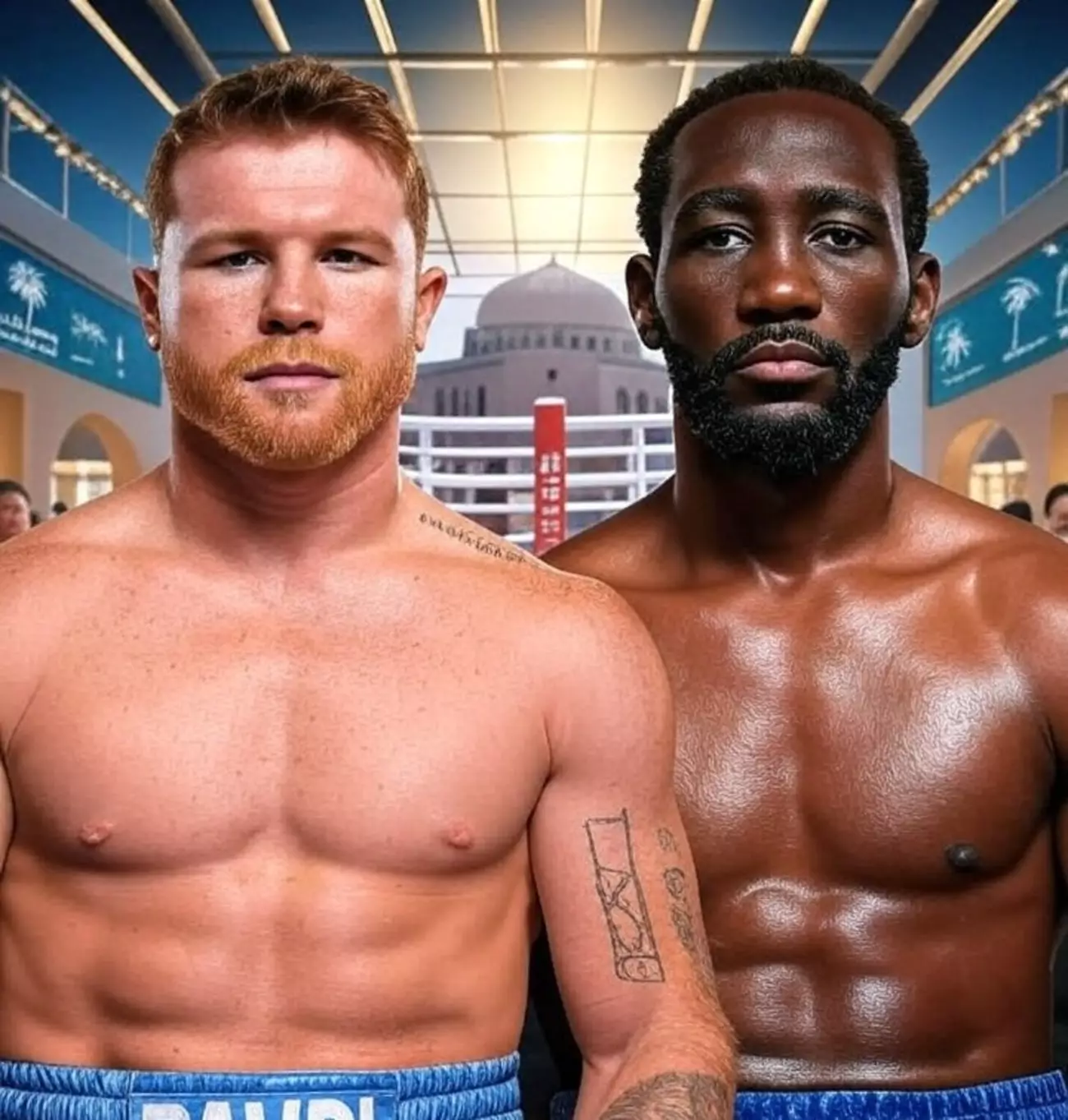The highly anticipated showdown between Saul “Canelo” Álvarez and Terence “Bud” Crawford is more than just a bout—it’s a defining moment in the history of boxing. Never before have two undisputed champions from vastly different weight classes at the same time faced off in such a high-profile manner, promising to redefine the possibilities of the sport. This fight is not merely about titles; it’s a spectacle that will test the very fabric of legacy, skill, and resilience. Canelo, a titan in the super middleweight division, has crafted an empire of victories, clutching multiple belts and edging closer to the elusive true champion status. Crawford, having already conquered the welterweight realm with an unblemished record and a reputation for his impeccable timing and adaptability, now dares to claim a new throne at 168 pounds.
The emotional stakes are palpable. Canelo seeks to affirm his dominance and affirm his status among boxing’s greatest, while Crawford aims to carve his name into history by conquering a bigger, stronger opponent and becoming the first boxer to unify titles across two weight classes in recent memory. This collision is not just about belts—it’s a symbol of pure boxing excellence, showcasing contrasting styles: Crawford’s finesse, speed, and precision versus Canelo’s raw power and relentless body work. The fight embodies the very essence of what makes boxing compelling: the clash of contrasting philosophies and physical prowess.
The Significance of Streaming on Netflix
This fight’s innovative distribution model is perhaps as revolutionary as the match itself. For the first time, a fight of this magnitude will be streamed globally via Netflix, a platform not traditionally associated with boxing or high-stakes sports events. With over 300 million subscribers worldwide, Netflix’s decision to broadcast the main event without requiring a pay-per-view fee dramatically shifts the landscape of sports entertainment. It is a bold move that democratizes access, potentially attracting millions who would otherwise have been priced out of viewing.
Netflix’s approach to streaming signifies a bold shift in how combat sports are consumed. Instead of paying hefty pay-per-view prices, viewers get to experience this historic event included in their existing subscriptions. This strategy not only broadens the audience but also challenges the traditional pay-per-view model that has dominated boxing for decades. It signals a future where boxing’s reach might expand exponentially through accessible streaming platforms, possibly making high-profile fights more inclusive rather than exclusive.
Prelims will be streamed for free across several popular platforms—Tudum, TKO’s YouTube channel, and WWE’s YouTube—further cementing the fight’s cultural significance and accessibility. This inclusive approach promises to drum up global excitement, ensuring that casual fans and long-time aficionados can all partake in the moment. Such a move could very well indicate the beginning of a paradigm shift in boxing promotion, where accessibility and mass reach supersede traditional broadcasting models rooted in exclusivity.
The Challenges and Expectations
Stylistically, this fight is as intriguing as its significance. Crawford’s classical boxing skills—timing, counterpunching, and exceptional defensive finesse—are tailored to neutralize power punchers. Canelo’s aggressive body work and power punch combinations have decimated opponents at super middleweight and beyond. The core question is whether Crawford’s skillset can overcome Canelo’s size, strength, and experience at this weight. It’s an extraordinary test of adaptability and heart, pitting finesse versus muscle, precision against pressure.
Perhaps the most compelling narrative is whether Crawford can implement his game plan against a champion who has shown resilience and adaptability. Canelo, with his extensive experience and versatile boxing IQ, will undoubtedly bring his A-game, making this a true chess match. Whoever controls the center of the ring and dictates the pace could determine the outcome, but the unpredictability is what elevates this fight beyond mere strategy into something legendary.
The undercard, though scaled down from earlier optimistic projections, still delivers a compelling lineup. It offers a blend of promising prospects and seasoned contenders that will warm up the crowd and build momentum for the headliner. But make no mistake: all eyes will be on the main event, and the storylines surrounding these two champions will dominate boxing conversations for years to come.
Reimagining Boxing’s Future
This fight exemplifies a broader trend—boxing’s ongoing evolution in the digital era. The move to stream via Netflix is not a mere marketing stunt; it’s an acknowledgment that the sport must adapt to an increasingly globalized, digital-first audience. With traditional pay-per-view models under scrutiny, the game’s biggest players are exploring innovative ways to attract viewers and maintain relevance.
What makes this event so potent is not solely the fighters involved but the cultural and economic shifts it represents. Boxing, often criticized for stagnation and over-commercialization, now appears poised for renewal through bold digital strategies. Perhaps this fight will be remembered as a pioneering moment, ushering in an era where access, innovation, and spectacle go hand in hand—transforming how future superfights are conceptualized, promoted, and consumed.
As fans eagerly await September 13, it’s undeniable that this event will leave an indelible mark on the sport. Whether Crawford’s precision can dismantle Canelo’s power or if Canelo’s experience and resilience dominate again, the outcome will be a testament to boxing’s unyielding capacity for reinvention. This is more than a fight; it’s a symbol of boxing’s relentless pursuit of greatness amidst shifting landscapes and technological upheavals.


Leave a Reply